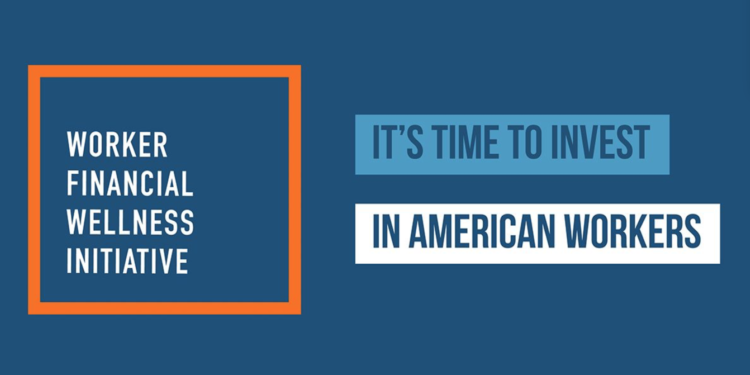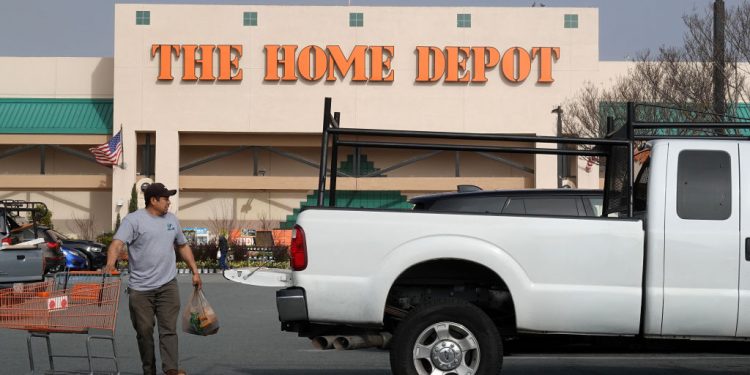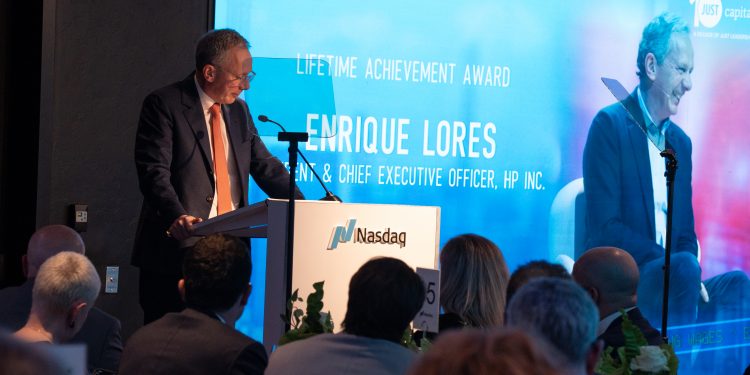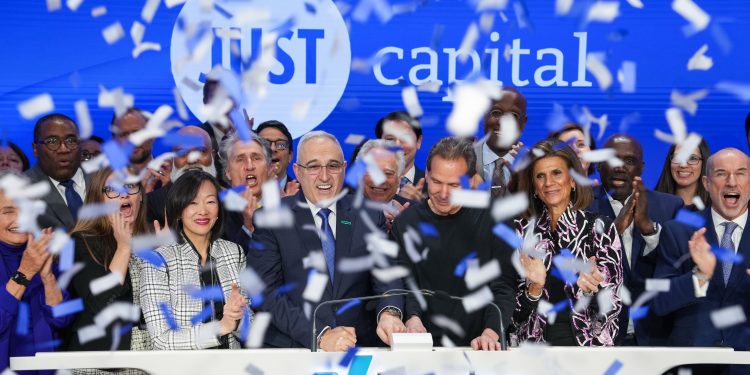There Are Nearly 10 Million ‘Bad Jobs’ at the Largest U.S. Companies. Why Zeynep Ton Says Now is the Perfect Time to Change This Status Quo.

(Evgenia Eliseeva)
A company full of “good jobs,” as Zeynep Ton defines them, is built through years of careful, deliberate management – but on its own, it’s a simple concept. And when you hear Ton, a professor at MIT Sloan School Management and founding president of the Good Jobs Institute (GJI), talk passionately about it, it’s hard not to see it as a no-brainer.
If you pay the workers on the lowest rung of your business as little as you can get away with, you’re not being savvy, Ton explains, you’re building a vicious cycle of employees who hate their job, are struggling outside of work, and your organization will be the worse for it. A company that is built on top of bad jobs is going to have its productivity and customer service suffer, and turnover is going to be high. If you instead invest in those workers, you’re going to eventually exceed the cost in the value you create.
And as our own research at JUST Capital shows, there are roughly 10 million of “bad jobs” among the country’s largest companies: We estimated that 50% of workers at Russell 1000 companies weren’t making enough to support a family of three, even with a partner working part-time.
Ton and the GJI team have years of experience implementing their Good Jobs Strategy in companies large and small, and inspiring other leaders to adopt the approach. For example, Walmart U.S. CEO John Furner, former head of Sam’s Club, is an ardent supporter of the Good Jobs approach – on Thursday, Walmart announced wage increase for 425,000 workers under Furner.
That is why JUST Capital and PayPal knew they would be ideal partners for our Worker Financial Wellness Initiative. Recognizing that reinventing aspects of your operations is a big ask for companies, we’re starting with an important first step: actually assessing what all of your lowest paid workers are making, and how that compares against a living wage for their family size and their location.
We recently spoke with Ton about why her career has shown her that taking this first step can be the beginning of a journey that CEOs, boards, investors, and of course, workers, will all want to embark on.
The following interview has been edited for length and clarity.
JUST Capital: If you were to sit down with the CEO of a Russell 1000 company, how would you pitch them the Worker Financial Wellness Initiative?
Zeynep Ton: Many of your employees probably have a much worse job than you thought, and it’s hurting them. It’s hurting society, and it’s hurting your business.
A lot of executives are not quite aware of how bad things are for their frontlines. So unless you do this type of analysis, you don’t have that awareness, and financial insecurity hurts everyone.
JUST: What if they respond by saying they understand but say that we are still in the middle of a pandemic and ask how they’d be able to prioritize what sounds like such a big project?
Ton: Precisely because we’re in the middle of a pandemic we should prioritize this! This is a time where we set our priorities, we think about values, we think about what we stand for, and we think about what the strategy of the organization will be. And having that strategy people-centered is quite important.
I talked to a CEO yesterday, from my world of retail, and the CEO said, “Our employees have been heroes. And I realized how much our customers have recognized them, how much our customers have appreciated them.” Now it’s time for us to treat them as heroes not just during this pandemic, but to create a business around them. This is exactly the time to prioritize it.
JUST: Some companies may be wary of publicly signing onto the Initiative because they don’t know how to communicate to their workers, or the public, expectations of what they’ll uncover or what next steps will be. How do you recommend leaders communicate this process?
Ton: First, look at the data and see where you are. And I would maybe reach out to some other companies who have done this and see what the reaction has been.
Intel discloses pay by race and gender, and it brackets how many people make less than between $10,000 and $15,000 a year. And what I heard from Intel’s chief HR officer, on a panel that she and I were in together, was, “We want to hold ourselves accountable. And some of our ESG investors were asking for this type of data. So we want to set targets, we want to improve.” That that level of transparency is helpful, how exactly you communicate that is probably quite personal.
In an ideal world, honestly, I wish that companies had to disclose this data so that investors could see it. Then, creating a more financially secure workforce is a choice. But I think facing the facts is the first step.
It can be integral to your DEI commitments
JUST: How does diversity, equity, and inclusion factor into worker financial wellness?
Ton: If you look at the low wage workforce in the United States, you will see that it’s disproportionately people of color. There are a lot of Black and Hispanic workers represented in that community. And there are a lot of women represented in that community. So doing this analysis and looking, as you said, it’s a journey, right? First you find out the wages and you try to uplift that population to create more opportunities for them.
And then the second step: One of my favorite data points is looking at internal promotion rates, career paths within the organization, by race and by gender, to see if you are creating those types of opportunities. Like in retail, you find that there are a lot more cashiers that are people of color than first-line supervisors, as a percentage. You’ll find the discrepancies, not just in the internal promotion, but also in the wages part as well. This is where assessing the data of your lowest paid workers will play a role in being equitable.
Snapping out of a vicious cycle
JUST: Why do you think that CEOs, even those that genuinely care, are often so unaware of the state of their lowest paid employees? Why is there that disconnect, and is there something even beyond this that can be done toward fixing that?
Ton: I think there are two issues there. One of them is that it requires a fundamental shift in how they run their business. It’s hard. It’s so much easier to go out there and say, “Let’s invest in training programs, let’s do upskilling,” because those don’t require structural changes, system changes, inside their organization. So that’s number one.
Number two, and this perhaps comes back to racial inequity, involves our assumptions about people. Not everyone believes the ability and motivation of low wage workers can be high. Part of the reason is because they have been so disconnected from the frontlines, and they don’t know about the realities of what’s going on. And the other part is that so many of them have been operating with high employee turnover, and they have removed decision-making from the frontlines, which can verify some of their assumptions. Like they say, “OK, people don’t show up. Our attendance is very problematic.” That’s because wages are low and the work design is not good, but they see that as a function of the person and the person’s ability, rather than a function of the system that they’ve designed that creates these types of behaviors.
So many times when I’ve presented my work, I would receive this response: “But are most people worthy of $15 an hour?” And this response is so telling, because then I tell them, “Look, it’s not a function of the person, it’s a function of the system that you set up that creates $15 an hour. But we unfortunately have some inaccurate assumptions about people and we designed a system that just verifies those assumptions.
JUST: And so this is where that concept of the vicious cycle comes into where it just kind of feeds off itself.
Ton: Yeah. It feeds off itself. In the vicious cycle that I talk about, you under-invest in people, you have high turnover, you have operational problems, then performance is poor, and then your sales budgets decline, and then your labor budgets decline – and this vicious cycle continues.
High turnover means you’re not hiring the right people and you’re not spending enough time for training, so you’ve hurt the ability of people to perform well. And if you hurt the ability of people to perform well, you say people are unable to do so and that means I’m not going to empower them to make decisions. I’m going to make the job as simple as possible. And then that’s another vicious cycle that feeds itself.
The status quo doesn’t cut it any longer
JUST: What about when we do see some companies pushing for higher wage policies, like Amazon has been doing for the $15 minimum wage?
Ton: Look, the last couple of years have been scary for a lot of people. A good chunk of the population believes that capitalism is not working for them, that the system is rigged against them. There’s so much inequality that people are now in the streets. Business leaders are coming to a realization that this form of staying with the status quo may not be sustainable for us as businesses.
And I think that realization is creating this awareness that we have to lift up the bottom, we have to lift up the wages and working conditions of people for a better functioning society and economy. I think that that’s one of the motivations.
But I wouldn’t say that so many executives are embracing this.
You can make this work even with low profit margins
JUST: Another thing that we hear a lot when introducing these concepts to different corporate leaders, is basically, OK, Dan Schulman with PayPal – they’re doing great, and they’re a tech company. But for the CEO of a company in an industry with low profit margins, like certain retailers, they’ll say it’s not the same thing and sorry, it’s not possible. How do you handle that?
Ton: That’s a very legitimate concern. For companies like PayPal or for JPMorgan Chase to ensure that everybody makes a living wage represents a small portion of their overall costs and it’s very doable. For leaders who want to do the right thing, they can do that tomorrow and create a good justification. And probably it will pay off, even if they do nothing else around lower turnover and higher productivity. If I were [JPM CEO] Jamie Dimon, I would do this in a heartbeat! You saw how much he committed to racial equity.
JUST: The $30 billion initiative.
Ton: Yeah. I mean, clearly you have a lot of extra money. But think about this for a large retailer, where the profit margins are in single digits, and labor presents the biggest operating expense. No amount of CEO compensation reduction is going to enable you to get to $15 an hour. So it’s not that easy. In those environments though, we have seen companies improve wages and working conditions a lot without hurting profitability. What it took was not just raising wages, but doing the whole Good Job Strategy that I talk about, changing the operating system.
One example that I can give you is Mud Bay. It’s a small to medium-sized retail chain. They have about 40-plus stores in the Northwest, 2% profit margins. They were able to raise employee wages 30% over a three-year period. Now, a 30% wage raise is big! How did they do that? Well, they made some other changes, like they simplified their product line and have done cross-training. They made decisions to improve the productivity and contribution of their employees. That along with lower employee turnover paid for those wage increases.
Sam’s Club, the wholesale club, they made wage investments $5-7 an hour for a good chunk of their workforce. And it ended up not costing them anything. Why? Because they made other changes to improve the productivity and contribution of their workforce. And it was a systemic change. So for those companies that are operating in low margin industries, I say, “I understand, wages alone will probably not be enough, but making the other changes to pay for this is a choice. It’s hard and it takes awhile to implement it, but it’s very doable and companies have done it.”
JUST: Are you able to translate lessons from companies to others, even if you’re looking at a case study with a small retailer and then go on to work with a large multinational organization?
Ton: Yes. Walmart is on this journey. It’s of course taking a long time for them – it’s a huge organization. Its subsidiary Sam’s Club is a huge organization. But I’ve seen it work in large companies, in smaller companies. I’ve seen it work in public companies, private companies. I’ve seen it work in the United States, and in a country like Spain. What it takes is a ton of courage and commitment to do it, and a lot of competence to be able to pull it off.
It requires long-term commitment, but your business will benefit
JUST: I understand that the timeline for a Good Jobs journey would be different from company to company, but can you give me a sense of what to expect?
Ton: It depends on how deep you are in a vicious cycle, and on the competence of project management abilities.
Sam’s Club started this journey in 2018 and they’ve already shown results. Quest Diagnostics did this in their call centers, and within 18 months, they cut employee turnover almost by half and they reduced their costs, even though they made wage investments and investments in career paths. They improved customer service, such as reducing transfer rates and improving call answers to within 60 seconds. Mud Bay, they started seeing benefits within three years. They had substantial improvements in their productivity, customer satisfaction, and turnover. So it’s not overnight – it doesn’t happen in a quarter or two – but it’s not 10 years, either.
There is a barrier for larger companies that we have noticed at the Good Jobs Institute. We have worked with lots of organizations where we have a workshop and people are very excited and they’re like, “Yes, we can do this. We want to do this.” And then they hear, well, it won’t be done in a year and create a return. So you see these short-term cost or sales pressures getting in the way of doing this and companies not prioritizing it. The tenures of CEOs of large organizations has been declining, and so it’s not unreasonable for them to think about what they can do that will be faster and easier.
JUST: Well, then how do you make the case against the short-term priorities for a long-term project to boards and investors?
Ton: It’s easier to connect to leaders who have come from the frontlines, someone like Jim Sinegal of Costco, or John Furner, who is now the CEO of Walmart U.S. – they started working on the frontlines and they understand the work and they believe in people. For them to make this bet in people is so much easier because they know the possibilities.
And yes, you need to bring the board on, but what you need to do is make this a strategic initiative. You have to say for me to win with my customers, to create things like omnichannel retail and a frictionless customer experience, I have to have this. That’s what convinces the board, that’s what convinces the investors.
The first step is a powerful one
JUST: Taking all of this into account, what do you want corporate leaders considering a worker financial wellness assessment to have as a takeaway?
Ton: We’ve done this kind of analysis with a few different companies now, and we had them present to each other in a workshop. Oftentimes when the data, like around take-home pay, there’s silence in the room. And what I have noticed is when leaders see these data, it gets to them. Not just from a business point of view, but from a moral point of view, too. When they see what percentage of their workers are making so little, that there’s no way for them to make ends meet, that brings a sense of urgency.
JUST: It’s a powerful first step. It really gets them.
Ton: It is. It gets them. We sometimes hear things like, “We truly care about our employees,” and many leaders do, but they’ve never looked at this before. So it is powerful. And I hope more companies will sign on.






